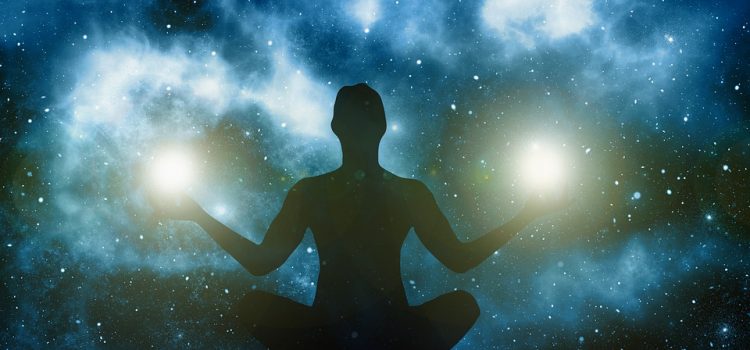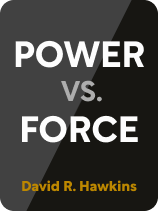

This article is an excerpt from the Shortform book guide to "Power vs. Force" by David R. Hawkins. Shortform has the world's best summaries and analyses of books you should be reading.
Like this article? Sign up for a free trial here.
Do you contribute to society more than you take from it? What’s the difference between power and force in a psychological sense?
According to David Hawkins, levels of consciousness set the tone for your life, for good or for bad. The higher your level, the better off you are. Consequently, you’re more able to positively impact the world.
Read more to learn why Hawkins believes that your level of consciousness makes a big difference.
David Hawkins on Levels of Consciousness
In Power vs. Force, David Hawkins discusses his studies into the nature of consciousness, the system he devised for measuring it, and why 200 is such a critical point on the consciousness scale. Here, we’ll look more closely at how, according to David Hawkins, levels of consciousness impact you and the world around you. He believes that low levels of consciousness (below 200) are harmful to you and to the world—and, conversely, that high levels of consciousness (200 and above) lead to happiness for you and those around you. We’ll also explain why Hawkins titled this book Power vs. Force, and we’ll describe the key differences between those two things.
The Critical Point of 200
Hawkins says that 200 (bravery) is the point on the scale where you contribute at least as much as you take from society. The higher on the scale you go, the more of a net positive you become for the world. At higher levels of consciousness, you understand that the purpose of society is to help everyone live the best life possible and that contributing your resources and abilities to the common good will also improve your life.
People below 200 on the consciousness scale don’t understand this. They’re self-absorbed, so they take whatever they can from others without reciprocating. For example, someone with a consciousness level below 200 might ask his neighbor to babysit his kids but refuse when the neighbor asks him to do the same.
| Selfishness and Altruism in Animals In behavioral terms, Hawkins is describing altruism (contributing to the common good) and selfishness (taking resources without reciprocating). As biologist Richard Dawkins explains in The Selfish Gene, all animals—not just humans—engage in some combination of those two behaviors. According to Dawkins, all animals in a given population being altruistic at all times would lead to the best possible outcomes (in biological terms, this means that the animals would have more offspring, and the population would grow to its maximum possible size). This echoes Hawkins’s statement that contributing as much as possible to the common good is best for everyone, including you. |
The Force Scale
The lower end of the consciousness scale (below 200) represents what Hawkins calls force: aggressive, harmful, and egotistical states of consciousness. These states are undesirable and hurtful. When you rely on force, you try to get what you want by bullying or manipulating others—in other words, you work against people rather than cooperating with them.
If you usually resort to force, you probably view life as a competition or a battle; you think in terms of “winners” and “losers” and believe that you can only get what you want by taking it from someone else. For example, you might think that the only way to get a promotion is to undermine your coworkers, making yourself look better by comparison—in other words, your colleagues have to “lose” so that you can “win.”
Hawkins says that force might lead to short-term satisfaction, but never to true happiness. At this low level of consciousness, you’re unreceptive to the truth—you can’t determine what you really want out of life or how to get it.
(Shortform note: Countless self-help books explain that, in order to be truly happy, you have to do something that improves the world (rather than harming it through force). For example, in Ikigai, the authors say that ikigai is a Japanese word meaning “reason for being.” To find your ikigai, consider four criteria: what you’re good at, what you’re passionate about, what you can be paid for doing, and what the world needs—that last criterion is incompatible with the harmful, aggressive levels of consciousness on the force scale. Furthermore, all four of these criteria involve uncovering the truth about yourself and the world, which according to Hawkins is the opposite of being unreceptive to the truth at low levels of consciousness.)
| Develop an “Infinite Game” Mindset One way to reduce your reliance on force (and thereby boost your consciousness level) might be to give up on the idea of “winning” at life. You might do so by abandoning a “finite game” mindset in favor of an “infinite game” mindset, as discussed by Simon Sinek in The Infinite Game. When you rely on force, you’re viewing life as a finite game: a situation with fixed rules and a clear endpoint, wherein some players win and others lose. The goal of a finite game is to win by any means necessary, including by working against other players to make sure they lose. Anything you’d normally think of as a game, such as video games and sports, falls into this category. However, Sinek says that life is actually an infinite game. Everyone in the world is a “player” in this game, and the “rules” include laws and social norms. However, the crucial difference is that there’s no way to win an infinite game because the game never ends—even when you die, the rest of the world will go on playing. The goal, then, is simply to play as well as possible for as long as possible, and that often involves cooperating with other players for mutual benefit. Shifting to an “infinite game” mindset may help you shed your desire to win at all costs. Sinek adds that when you have an infinite game mindset, you don’t just think long-term, but also large-scale—how will your actions affect the people around you? Your community? The world as a whole? |
Use Force Cautiously
Hawkins does acknowledge that force is sometimes necessary. For example, even an enlightened society would have to resort to force when arresting a dangerous criminal. In doing so, that society would harm that one person to protect the common good.
However, force should be used sparingly. To continue the previous example: Once that criminal is in custody, an enlightened society would work with them through rehabilitation, rather than working against them through punishment. This leads to better outcomes for the individual—who can be free and happy again after rehabilitation—and for society—which gains another contributing member instead of spending resources to keep them imprisoned.
| Force and Power in Animal Behavior Scientists have functional models supporting Hawkins’s theories about using force in an otherwise altruistic society. For instance, animal behavioral studies mirror what Hawkins says about human behavior. We previously talked about Richard Dawkins’s The Selfish Gene. Specifically, we discussed his ideas on selfishness and altruism in animals and how a purely altruistic population would have the best possible outcomes. However, Dawkins says that while pure altruism is the best strategy in theory, it doesn’t work in practice. A few selfish individuals would easily take advantage of that situation, taking far more than their share of the available resources and starving out their altruistic counterparts. Therefore, the most effective strategy in practice is what’s called retaliation: being altruistic most of the time, but countering selfish behavior with short bursts of aggression. |
The Power Scale
A level of 200 and above on the consciousness scale is associated with what Hawkins calls power: cooperative, loving, and understanding states of consciousness. It’s productive in and of itself—as opposed to force, which is useful only when used against something else.
Hawkins says that you reach this level of consciousness when your actions, goals, and morals are all aligned with one another. In other words, everything you do gets you closer to one of your goals; and those goals are based on your values, meaning that reaching them will make you happier. For example, if you value health, one of your goals might be to lose 10 pounds, so you take actions such as exercising regularly and eating a balanced diet.
When you’re in an powerful state of over 200 on the consciousness scale, you work together with others to achieve the best possible outcomes for both yourself and everyone else. First, you’re receptive to the universe’s truth signals, meaning that you can understand how to live a life that will make you truly happy. Second, you give more than you take—in other words, you improve the world around you.
(Shortform note: According to Stoic philosophy, you can use reason to recognize that making the world better makes your life better. For example, Marcus Aurelius’s Meditations—one of the definitive texts on Stoicism—says that, logically speaking, working for the common good is the only way to live a happy and fulfilling life. Aurelius’s reasoning is that, to feel fulfilled, you must have a consistent goal and spend your life working toward that goal. However, people are naturally inconsistent; your personal desires and goals will change frequently. Therefore, any fulfilling goal must be selfless, rather than oriented around your ever-changing personal preferences.)
Enlightenment: The Highest Form of Consciousness
The power scale starts at bravery, the transitional state between force and power that we previously discussed. However, according to Hawkins, bravery only has a consciousness level of 200—the highest state of consciousness is enlightenment, which begins at a consciousness level of 700 and ends at 1,000 (the highest possible rating).
When you reach enlightenment, you become part of the universal consciousness and no longer think of yourself as an individual. Thus, there’s no definable emotion or action associated with this level; you simply exist in a state of perfect understanding and serenity. In other words, it wouldn’t be accurate to say that you’re happy after reaching enlightenment. Instead, you’re completely at peace, free of even the desire for happiness.
Summing It Up: The Virtuous Cycle
Throughout Power vs. Force, Hawkins emphasizes that improving your consciousness will drive you to keep improving. He’s arguably describing a virtuous cycle: a repetitive process where each step feeds constantly into the next, leading to better and better outcomes. (You could also call this a positive feedback loop.)
The virtuous cycle that Hawkins describes has four steps: develop cooperative power, reduce your reliance on aggressive force, elevate your level of consciousness, and increase your receptiveness to truth. Each step leads to the next, with the final step (increase receptiveness to truth) leading back to the first (develop cooperative power). These four steps together produce two outcomes: become happier and make the world better.

For example, if you move from what Hawkins calls willingness (consciousness level 250) to what he calls acceptance (consciousness level 310), you’ll be so much happier and more empowered that you’ll want to keep working your way up the scale toward enlightenment.
| Accelerating the Virtuous Cycle The idea of the virtuous cycle is commonly credited to Amazon founder Jeff Bezos. He built Amazon—one of the world’s largest companies—based on such a cycle: It’s an online marketplace where third-party vendors sell their products, thereby bringing in customers, which in turn attracts more and better vendors, and so on. Crucially, Bezos also realized that bolstering any part of a positive feedback loop would naturally cause the entire system to grow more quickly. For example, offering incentives for sellers to come to Amazon, or offering special deals to attract new customers, would boost growth for the site as a whole. This principle can be applied to the virtuous cycle of consciousness: Because the cycle feeds into itself, improving any of it will improve all of it. |

———End of Preview———
Like what you just read? Read the rest of the world's best book summary and analysis of David R. Hawkins's "Power vs. Force" at Shortform.
Here's what you'll find in our full Power vs. Force summary:
- A complete guide to human consciousness
- How to connect with universal consciousness and glean its insights
- How to use applied kinesiology to tell if something is true or false






